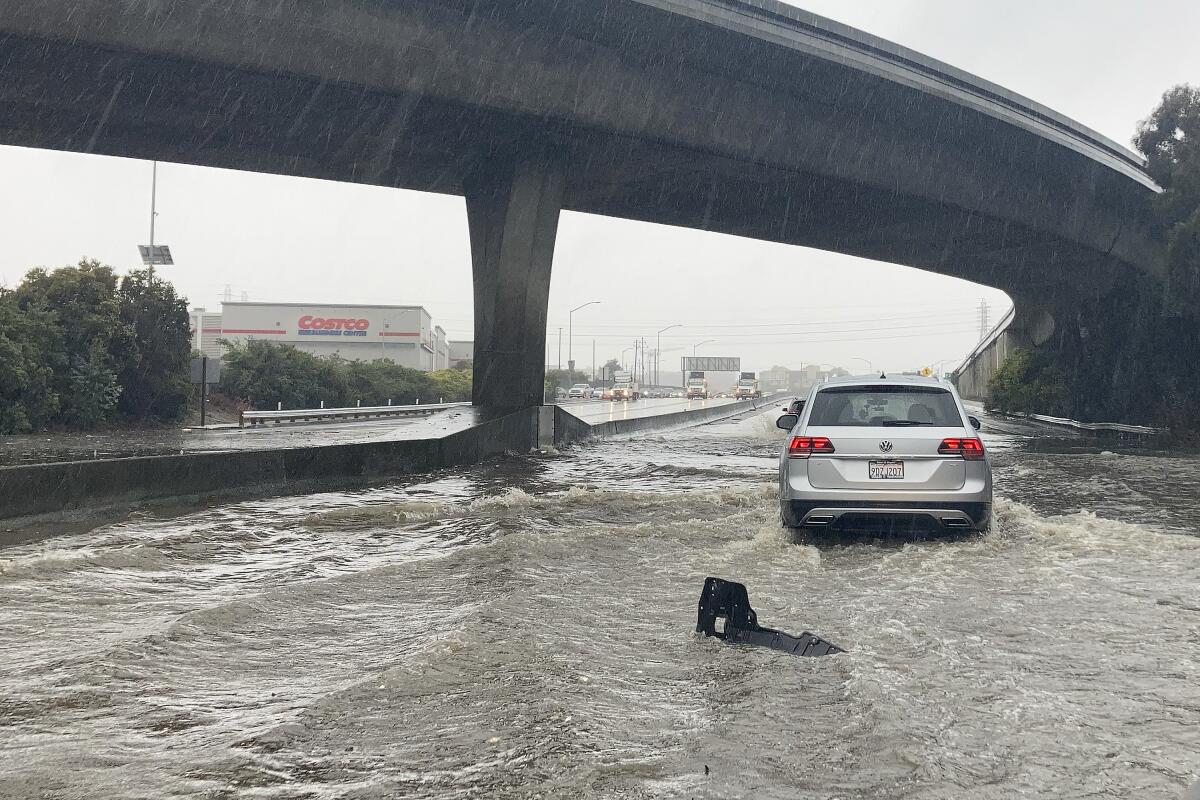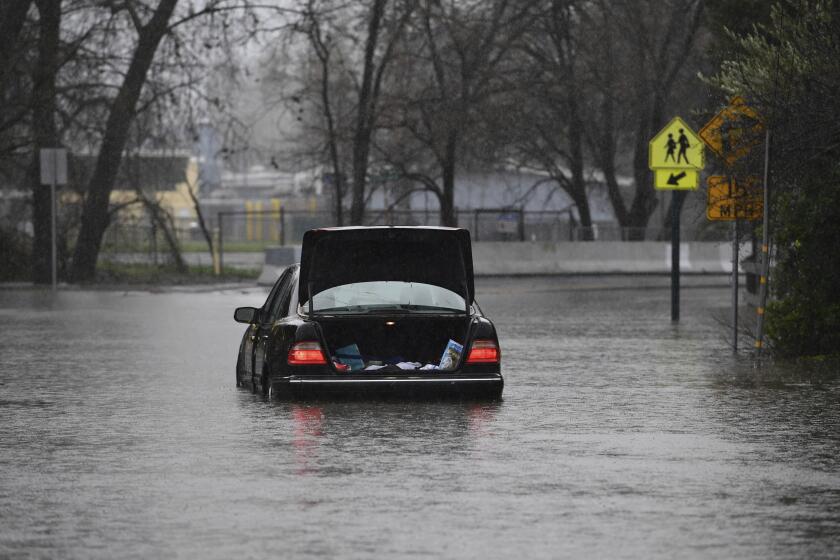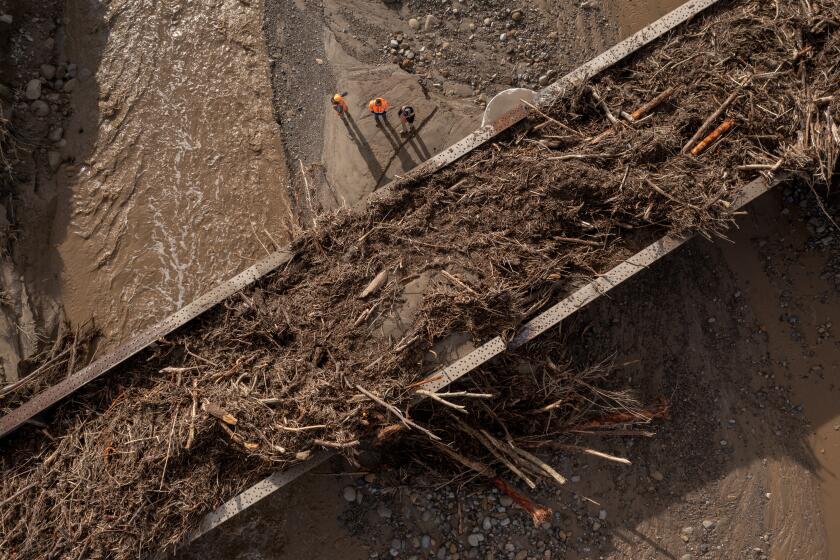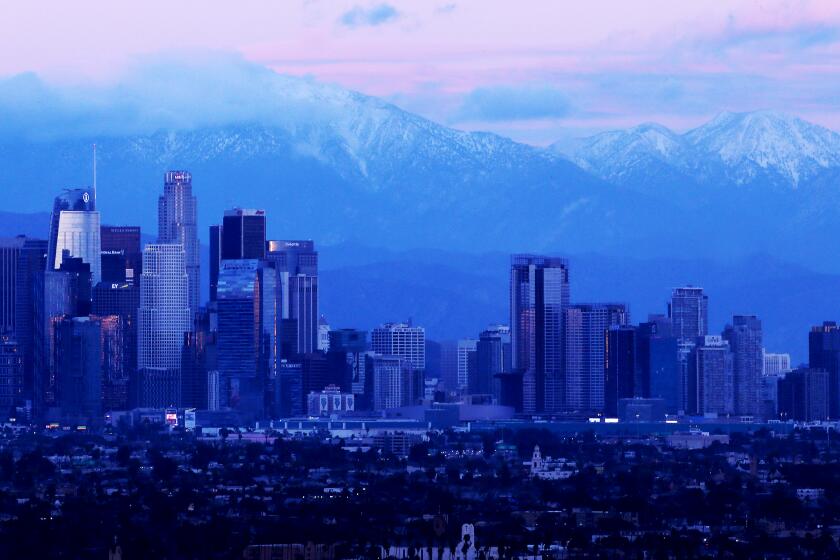Op-Ed: How to save all that water from the atmospheric river

- Share via
California has seen so much rain in the last few weeks that farm fields are inundated and normally dry creeks and drainage ditches have become torrents of water racing toward the ocean. At the same time, most of the state is still in severe drought.
All that runoff raises the question — why can’t more rainwater be collected and stored for the long, dry spring and summer when it’s needed?
As a hydrogeologist, I’m interested in what can be done to collect runoff from storms like this on a large scale. There are two primary sources for large-scale water storage that could help make a dent in the drought: storing it behind dams and in the ground.
Days of significant rainfall have already soaked much of the state. A flood watch has been issued for much of Northern California.
When California gets storms like this, water managers around the state are probably shaking their head and asking, why can’t we hold on to more of that water? The reality is, it’s a complicated issue.
California has big dams and reservoirs that can store large volumes of water, but they tend to be in the mountains. And once they’re near capacity, water has to be released to be ready for the next storm. Unless there’s another reservoir downstream, a lot of that water is going out to the ocean.
In more populated areas, one of the reasons storm water runoff isn’t automatically collected for use on a large scale is because the first runoff from roads is often contaminated. Flooding can also cause septic system overflows. So, that water would have to be treated.
The powerful storm that knocked out power, toppled trees — including one that killed a toddler — and flooded homes along the coast in Santa Cruz continued its march through the region.
You might say, well, the captured water doesn’t have to be drinking water, we could just use it in parks, golf courses and strips along highways. But then you would need a place to store the water, and you would need a way to distribute it, with separate pipes and pumps, because you can’t put it in the same pipes as drinking water.
There’s another option, and that’s to put it in the ground where it could help to replenish groundwater supplies.
The process is called managed recharge, and it has been used for decades in many areas. The techniques have been gaining more attention lately as wells run dry amid the long-running drought. More than 340 local recharge projects in California have been proposed, and the state estimates they could store an additional 500,000 acre-feet of water in wet years if all were built.
One method being discussed by the state Department of Water Resources is Flood-MAR, or flood-managed aquifer recharge. When there are big flows in rivers, managers could potentially divert some of that flow onto large parts of the landscape and inundate thousands of acres to recharge the aquifers below. The concept is to flood the land in winter and farm in summer.
Southern California will continue to see heavy rainfall through the rest of the week, and likely into next, forecasters say.
Flood-MAR is promising, provided we can find people who are willing to inundate their land and secure water rights. In addition, not every part of the landscape is prepared to take that water.
You could inundate 1,000 acres on a ranch, and a lot of it might stay flooded for days or weeks. Depending on how quickly that water soaks in, some crops will be OK, but other crops could be harmed. There are also concerns about creating habitat that encourages pests or risks food safety.
Another challenge is that most of the big river flows are in the northern part of the state, and many of the areas experiencing the worst groundwater deficits are in Central and Southern California. To get that excess water to the places that need it requires transport and distribution, which can be complex and expensive.
In the Pajaro Valley, an important agricultural region at the edge of Monterey Bay, regional colleagues and I are trying a different type of groundwater recharge project where there is a lot of runoff from hill slopes during big storms.
The idea is to siphon off some of that runoff and divert it to infiltration basins, occupying a few acres, where the water can pool and percolate into the ground. That might be on agricultural land or open space with the right soil conditions. We look for coarse soils that make it easier for water to percolate through gaps between grains, but much of the landscape is covered or underlain by finer soils that don’t allow rapid infiltration. Careful site selection is important.
One program in the Pajaro Valley encourages landowners to participate in recharge projects by giving them a rebate on the fee they pay for water use through a “recharge net metering” mechanism. We did a cost-benefit analysis of this approach and found that even when you add in all the capital costs for construction and hauling away some soil, the costs are competitive with finding alternative supplies of water and cheaper than desalination or water recycling.
In any case, it’s going to take many methods and several wet years to make up for a long period of low rainfall. One storm certainly doesn’t do it, and even one wet year doesn’t do it.
For basins that are dependent on groundwater, the recharge process takes years. If this is the last rainstorm of this season, a month from now we could in trouble again.
Andrew Fisher is a professor in the Earth & Planetary Sciences Department at UC Santa Cruz. This article was produced in partnership with The Conversation.
More to Read
A cure for the common opinion
Get thought-provoking perspectives with our weekly newsletter.
You may occasionally receive promotional content from the Los Angeles Times.












